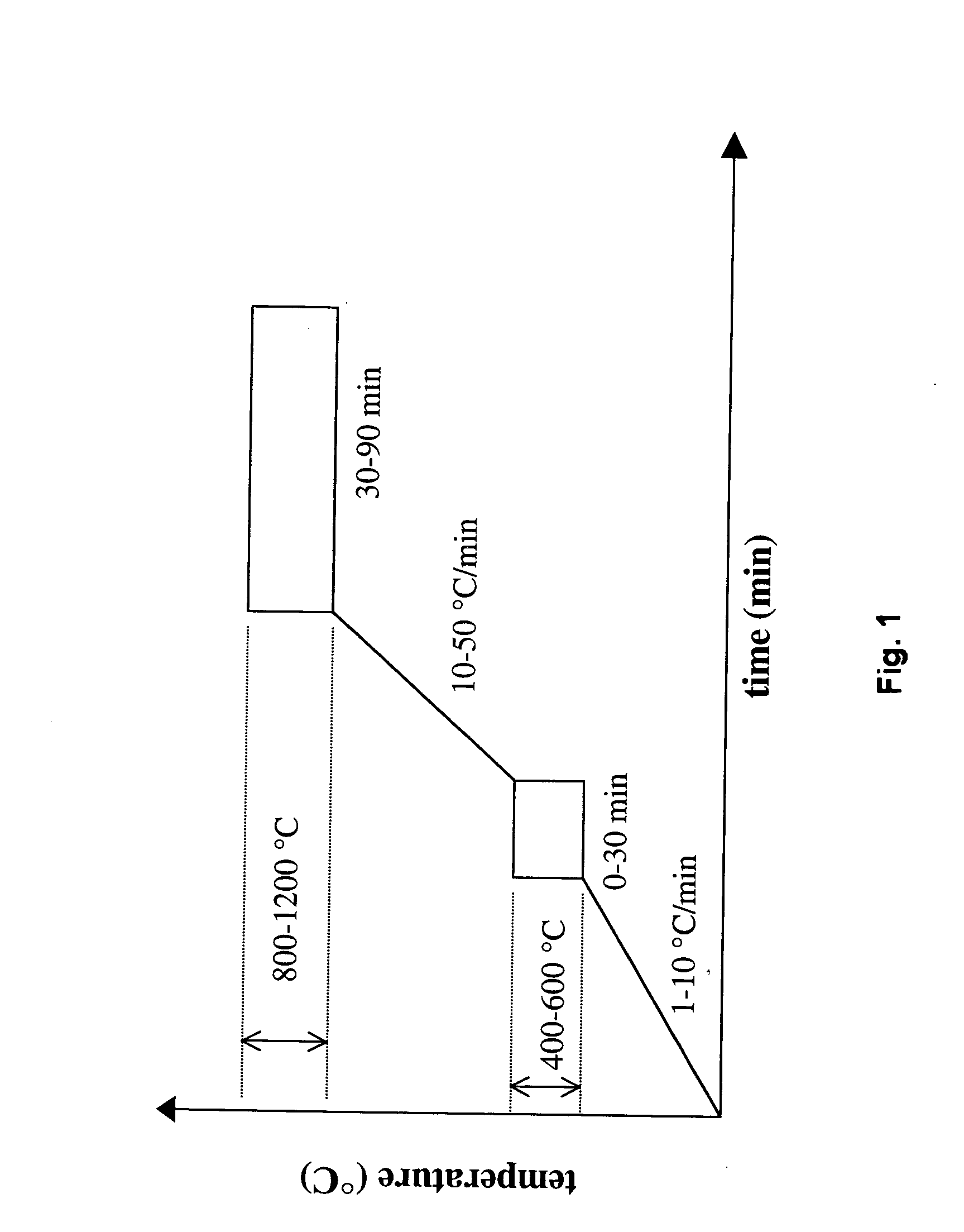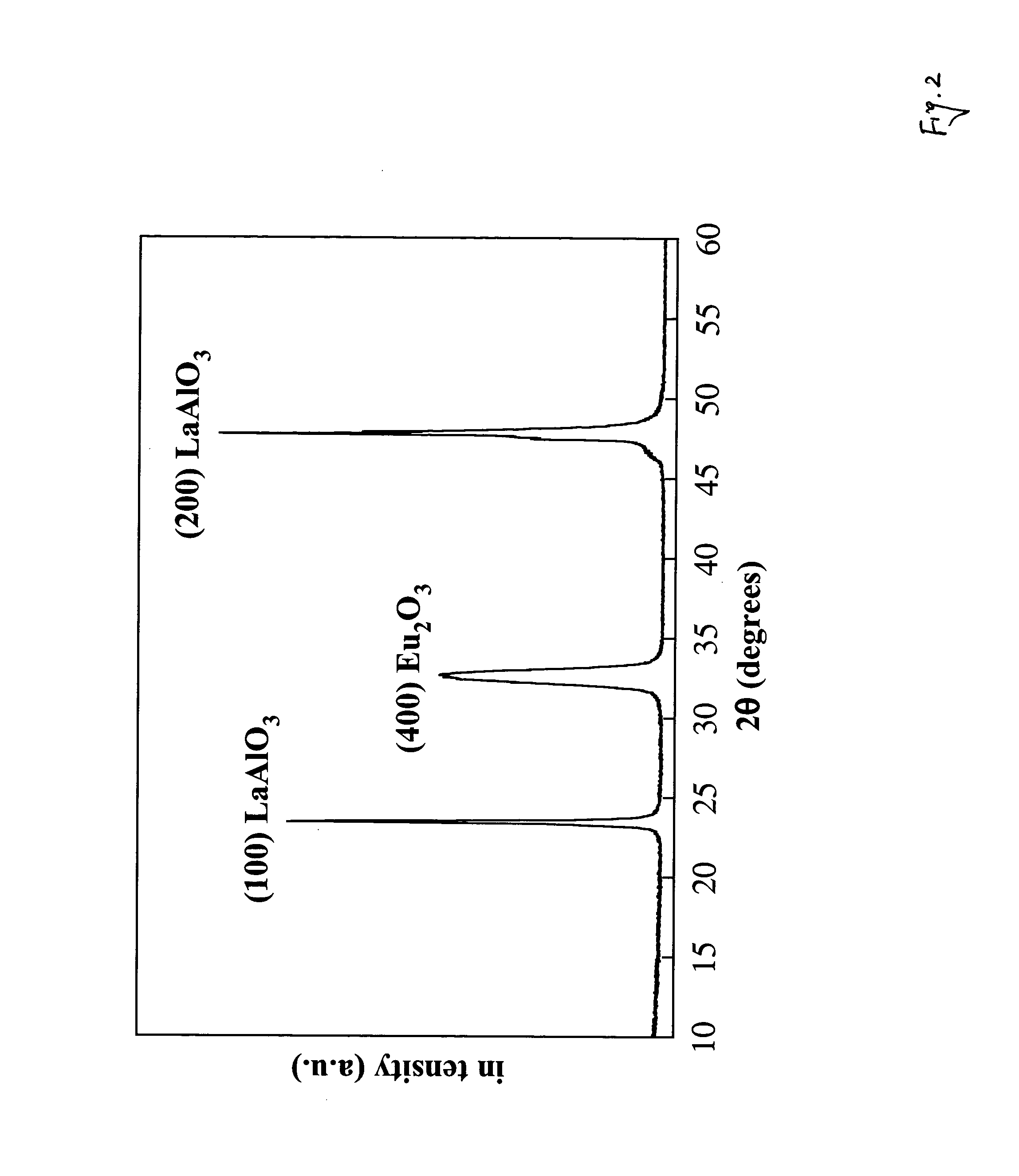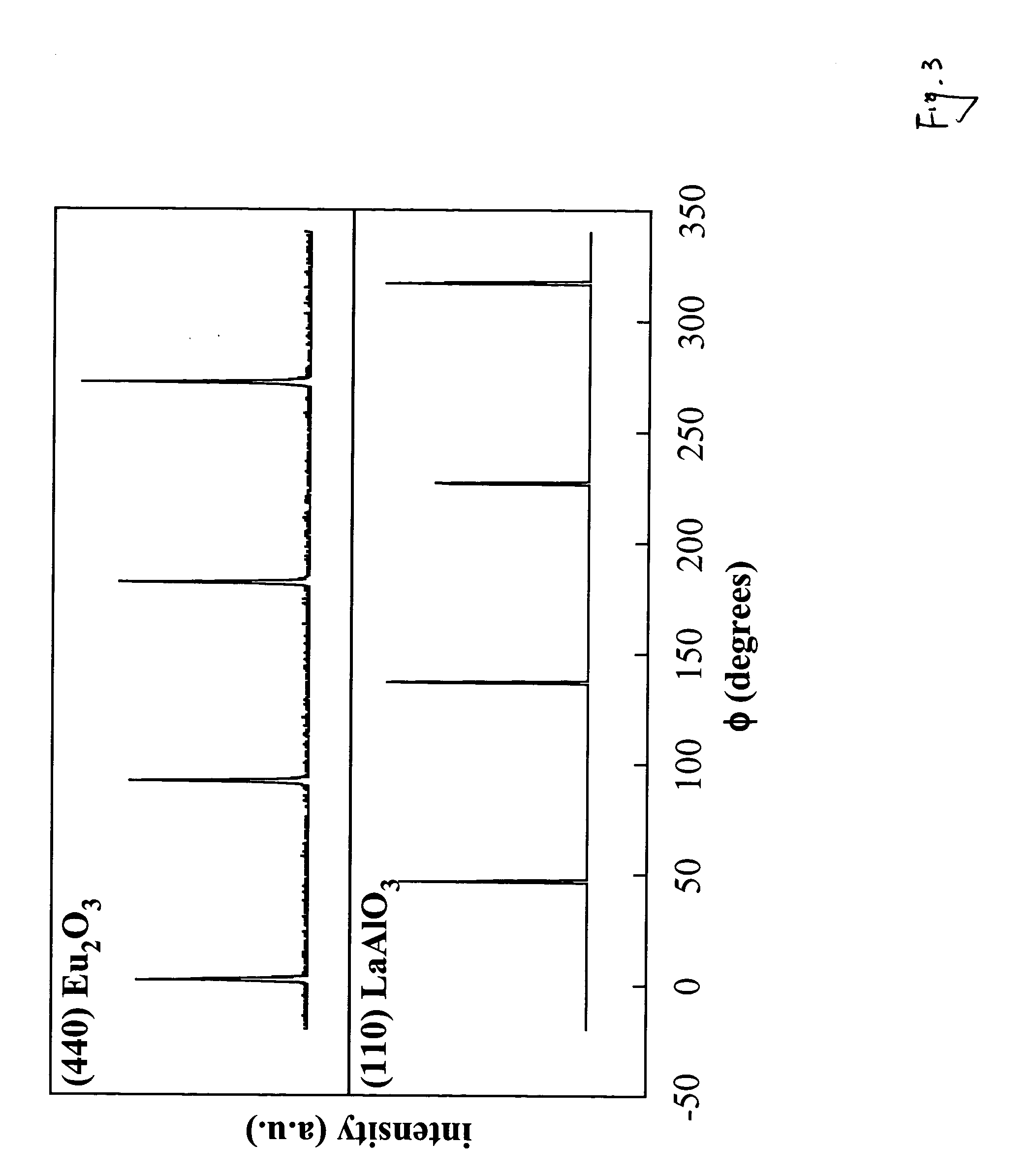Polymer-assisted deposition of films
a technology of metal oxide films and films, applied in the direction of liquid/solution decomposition chemical coatings, superconductor devices, coatings, etc., can solve the problems of poor reproducibility of sol-gel processes, uncontrollable polymerization of metal oxo oligomers, and unsatisfactory industrial production processes
- Summary
- Abstract
- Description
- Claims
- Application Information
AI Technical Summary
Problems solved by technology
Method used
Image
Examples
example a
[0056] A solution including zinc chloride and polyethylenimine was prepared as follows. An amount of 4.4 grams of polyethylenimine was dissolved in 40 mL of water and the pH was adjusted to pH 6 with addition of 10% HCl. To this solution was added 2.2 grams of ZnCl2 and the solution was stirred. After stirring the solution was placed in an Amicon ultrafiltration unit containing a PM 10 ultrafiltration membrane designed to pass materials having a molecular weight <10,000 g / mol. The solution was diluted to 200 mL and then concentrated to 45 mL in volume. Inductively coupled plasma-atomic emission spectroscopy showed that the final solution had 21.1 mg / mL of Zn.
example b
[0057] A solution including zinc nitrate and polyethylenimine was prepared as follows. An amount of 2.0 grams of polyethylenimine was dissolved in 40 mL of water and the pH was adjusted to pH 6 with addition of 10% HCl. To this solution was added 2.5 grams of zinc nitrate hexahydrate and the solution was stirred. After stirring the solution was placed in an Amicon ultrafiltration unit containing a PM 10 ultrafiltration membrane designed to pass materials having a molecular weight <10,000 g / mol. The solution was diluted to 200 mL and then concentrated to 20 mL in volume. Inductively coupled plasma-atomic emission spectroscopy showed that the final solution had 24.2 mg / mL of Zn.
example c
[0058] A solution including zinc chloride, dipotassium ethylenediaminetetraaceticacid (EDTA K2) and polyethylenimine was prepared as follows. An amount of 2.0 grams of dipotassium ethylenediaminetetraaceticacid was dissolved in 30 mL of water. To this solution was added 0.75 grams of zinc chloride and the solution was stirred. After stirring, 2 grams of polyethylenimine were added and the pH was adjusted to 9 with addition of 10% HCl. The solution was placed in an Amicon ultrafiltration unit containing a PM 10 ultrafiltration membrane designed to pass materials having a molecular weight <10,000 g / mol. The solution was diluted to 200 mL and then concentrated to 20 mL in volume. Inductively coupled plasma-atomic emission spectroscopy showed that the final solution had 24.2 mg / mL of Zn.
PUM
| Property | Measurement | Unit |
|---|---|---|
| temperatures | aaaaa | aaaaa |
| temperature | aaaaa | aaaaa |
| temperature | aaaaa | aaaaa |
Abstract
Description
Claims
Application Information
 Login to View More
Login to View More - R&D
- Intellectual Property
- Life Sciences
- Materials
- Tech Scout
- Unparalleled Data Quality
- Higher Quality Content
- 60% Fewer Hallucinations
Browse by: Latest US Patents, China's latest patents, Technical Efficacy Thesaurus, Application Domain, Technology Topic, Popular Technical Reports.
© 2025 PatSnap. All rights reserved.Legal|Privacy policy|Modern Slavery Act Transparency Statement|Sitemap|About US| Contact US: help@patsnap.com



